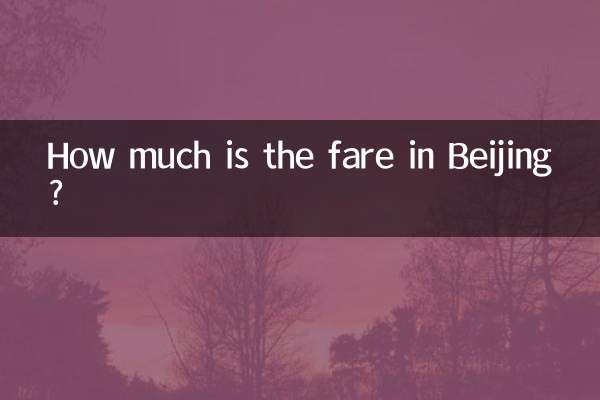How much does the subway cost: Hot topics across the Internet and structured data analysis
Recently, the discussion about subway fares has become one of the hot topics on the Internet. As urbanization accelerates, as the main mode of public transportation, subway fare policies, operating costs and passenger affordability have attracted much attention. This article will combine hot topics and structured data in the past 10 days to analyze subway fares in major cities around the world and explore the economic and social factors behind them.
1. Comparison of subway fares in major cities around the world

The following is a comparison of subway fares in 10 major cities around the world (data source: public reports and official information, statistical time is the past 10 days):
| City | One-way fare (local currency) | One-way fare (RMB conversion) | Monthly ticket price (local currency) | Monthly ticket price (RMB conversion) |
|---|---|---|---|---|
| Beijing | 3-10 yuan | 3-10 yuan | No unified monthly pass | — |
| Shanghai | 3-15 yuan | 3-15 yuan | No unified monthly pass | — |
| New York | $2.90 | About 21 yuan | $127 | About 920 yuan |
| London | £2.50-£6.80 | About 23-62 yuan | £156 | About 1420 yuan |
| Tokyo | 170-310 yen | About 8-15 yuan | 20,000 yen | About 980 yuan |
| Paris | 1.90 euros | About 15 yuan | 84.10 euros | About 650 yuan |
As can be seen from the table, subway fares in Chinese cities are relatively low, while fares in European and American cities are higher. In particular, the monthly ticket price in London is much higher than in other cities.
2. The economic logic behind subway fares
The level of subway fares is closely related to the following factors:
1.government subsidies: China's subway operations usually rely on government subsidies, so fares are lower; while subway operations in European and American cities rely more on market-based revenue, so fares are higher.
2.operating costs: Labor, energy and maintenance costs vary significantly. For example, London’s underground system has a long history and high maintenance costs.
3.Passenger flow: The average daily passenger flow of subways in Beijing and Shanghai exceeds 10 million, and the scale effect dilutes the unit cost.
3. Recent hot topics: subway price increase and public reaction
In the past 10 days, subway fare adjustments in many cities have triggered heated discussions:
-Guangzhou: It is planned to implement "differentiated pricing during peak hours". Some netizens believe that it will increase the burden of commuting.
-New York: The fare increase proposal was met with protests, and citizens called for more government subsidies.
-Singapore: Announced that fares will be frozen in 2024, and the government will allocate additional subsidies.
4. Future Trends: Balancing Metro Fare
In the future, subway fares may show the following trends:
1.dynamic pricing: Through big data analysis, differentiated pricing between peak hours and off-peak hours is achieved.
2.diversified income: The proportion of non-ticketing income such as advertising and commercial development has increased, reducing dependence on ticket prices.
3.Green travel incentives: Some cities may introduce low-carbon travel subsidies to encourage the use of public transportation.
To sum up, subway fares are not only a transportation issue, but also the epitome of urban governance and economic policies. How to reduce passenger burden while ensuring operational sustainability will be a common challenge faced by cities around the world.

check the details

check the details